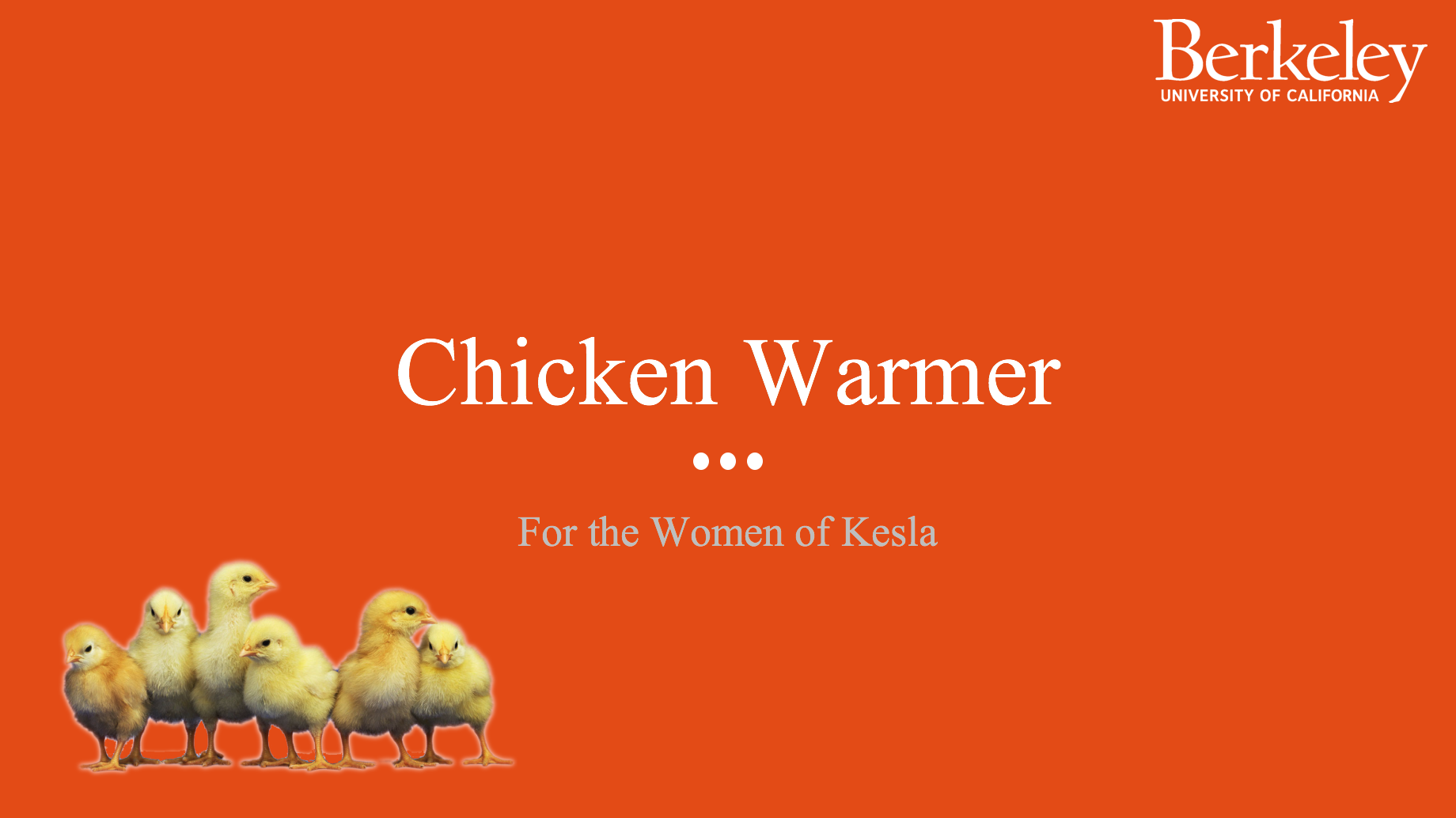SILVIA LASERNA
Helping solve society's most pressing needs with rigor, creativity, and passion.
Challenge:
Design a device to keep Kesla’s chicks warm during winter nights without electricity, reduced labor and a minimum amount of fuel.
Outcome:
The design of a low-cost, scalable device that can easily be manufactured, transported, cleaned and used by Kesla women to keep their chicks warm during the winter time without any fuel or additional labor.
The women of Kesla (Central India) come from nomadic tribes that were forced to settle, losing access to natural resources and their traditional livelihoods. In the past 10 years many of them have joined a “women’s cooperative of chicken brooders”, supported by local industry and the Ford Foundation. The women receive the chicks when they are a couple of days old and sell them to industrial companies after six weeks, earning according to weight-gain.
However, this is the riskiest and most labor intensive part of the business as baby chicks are most vulnerable to predators, temperature and humidity. To warm the chicks in the winter time and avoid death or weight loss, the women collect firewood from the nearby protected forest and burn it over night. This means that they fetch the wood illegally, putting themselves at risk with the forest guards, and then they stay up all night, losing important hours of sleep and inhaling fumes.
Sri Hari, one of the businesses supporting the Kesla Coop asked the Berkeley Chicken Warmer team to design an affordable solution that requires less labor, less fuel and ensures chicken health, guaranteeing more time and income for the women of Kesla.
Approach:
- Conduct structured interviews with development practitioners and businesses that work in the field with Kesla women to understand the women’s needs and living conditions, the chicken brooding facilities, the funding schemes and the magnitude of the problem in terms of temperatures, mortality rates, number of women and chicks.
- Conduct expert interviews with UC Berkeley specialists in thermodynamics, cook stoves, chemical engineering and chicken brooding to understand heat sources, insulation, phase changing materials and optimal temperatures.
- Identify stakeholders and create Point of View profiles for each.
- Brainstorm ideas with varying heat sources, spatial distribution, structures and insulation, and consult with advisors.
- Construct a temperature model that varies with heat source, insulation and area to identify best insulation material, quantity needed and area of each warming unit.
- Build prototypes and test.
Less labor, less fuel, healthy chicks.
Findings:
- Most heat sources require additional resources such as water, wood or electricity.
- Phase changing materials can be hazardous and not efficient as they need to be constantly replaced.
- Polypropylene is the best insulation material which is readily available and easy to manipulate.
- The warmth of the chicks is a sufficient heating source as long as the height and thickness of the Polypropylene structure is adequate.
- The structure must be covered with smooth plastic to facilitate cleaning and avoid the chicks pecking the Polypropylene.
- Chicks will learn to use the structure to stay warm during the night.
With the right amount of insulation, the heat produced by the chicks themselves will keep them warm enough.
The Team:
My Role:
- Developed scoping, work plan and responsibilities within the team
- Coordinated group meetings, sent weekly emails tracking progress and managed communications with client, experts and advisors
- Created user profile and POV for the women of Kesla
- Researched phase changing materials and the socio-cultural context of Kesla women
- Planned and participated in expert and field practitioner interviews
- Designed spatial solutions and participated in design brainstorming session
- Participated in construction of prototypes
- Carried out prototype testing











